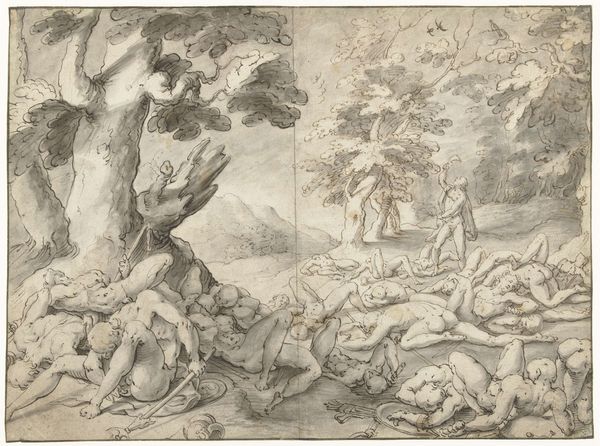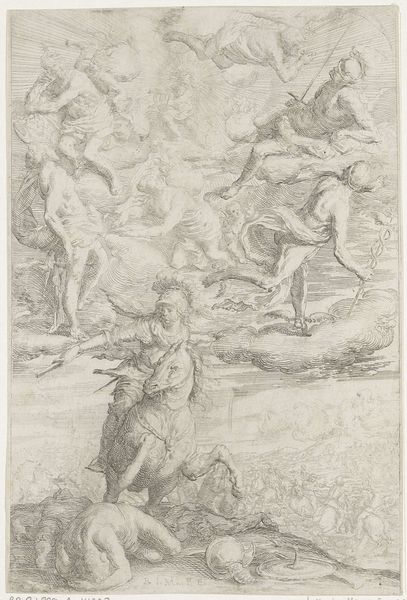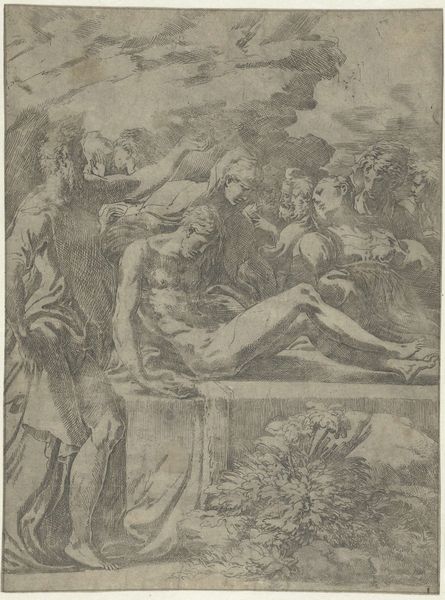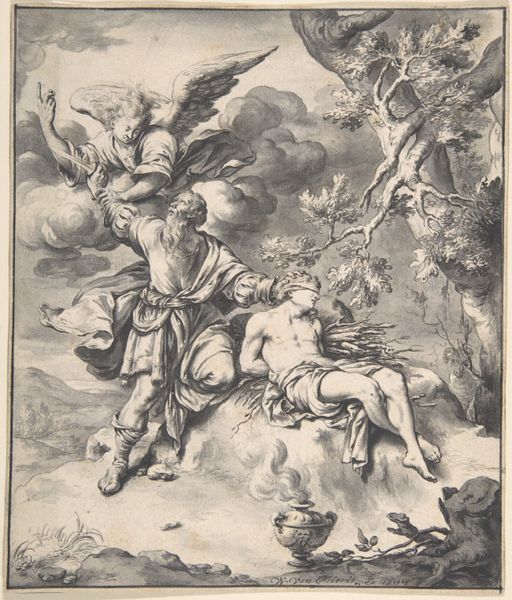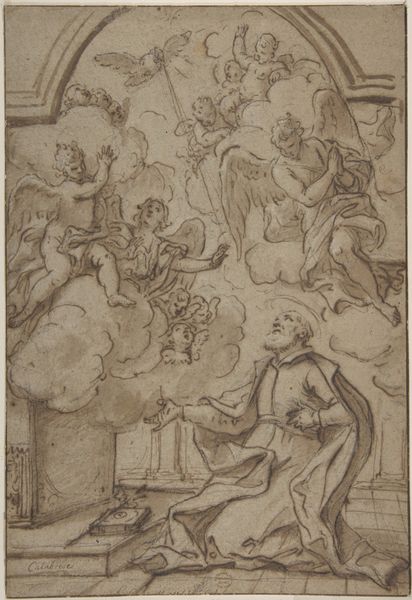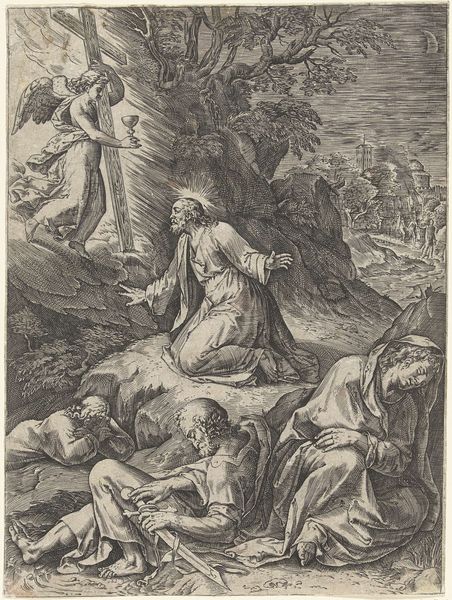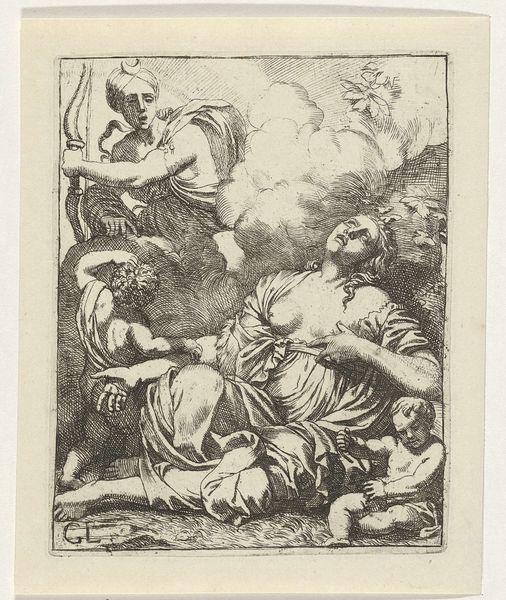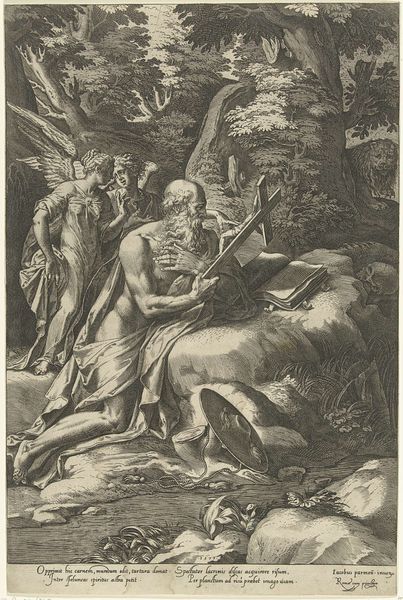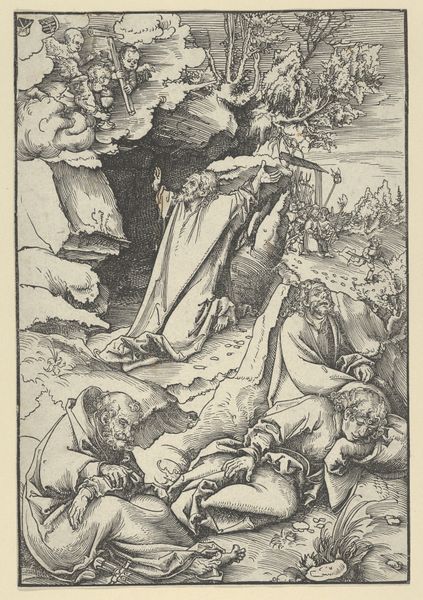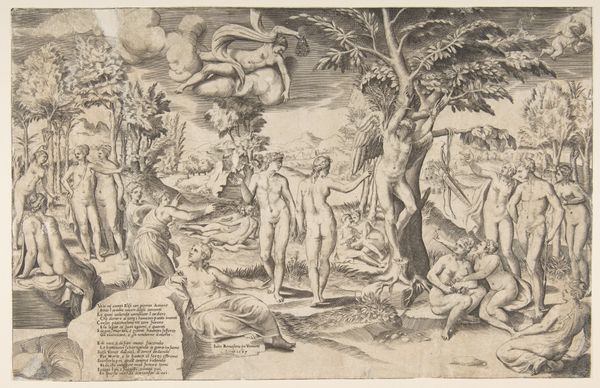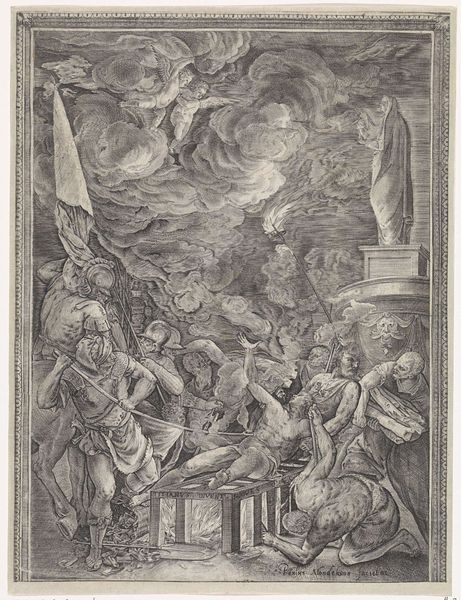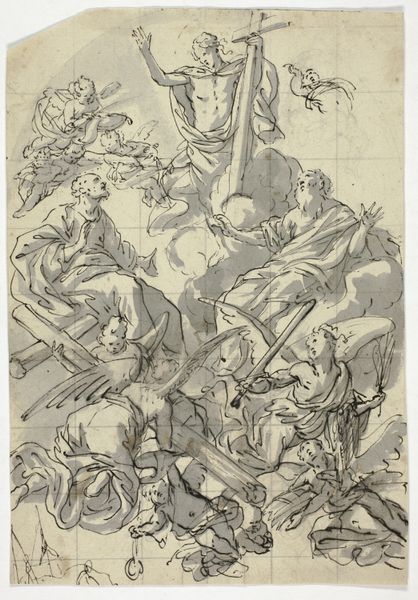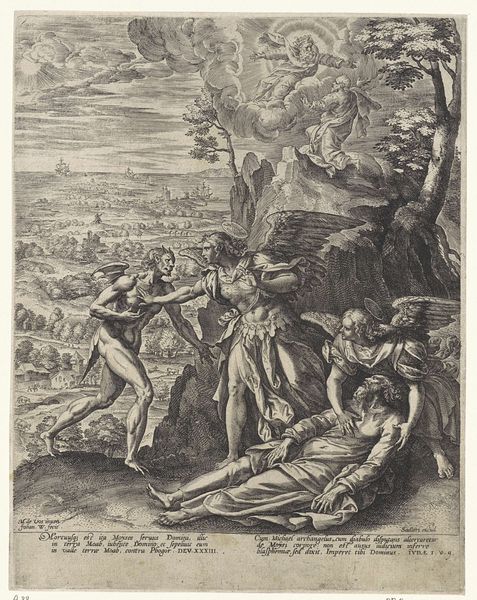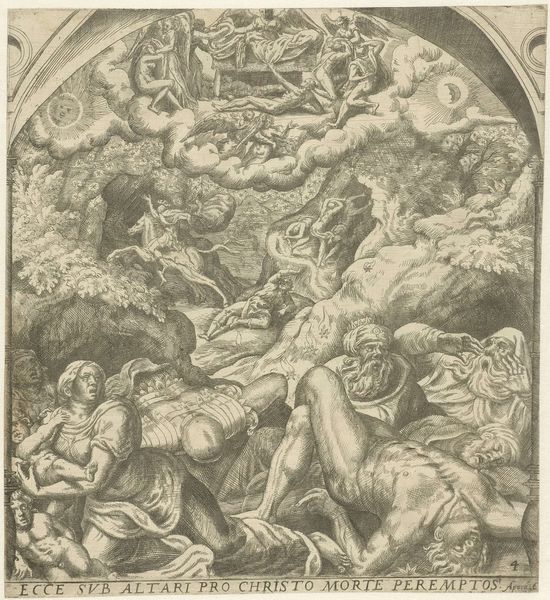
drawing, ink
#
drawing
#
ink drawing
#
allegory
#
landscape
#
figuration
#
11_renaissance
#
ink
#
pencil drawing
#
italian-renaissance
Dimensions: width 193 mm, height 246 mm
Copyright: Rijks Museum: Open Domain
This print, titled "Jakobs ladder", was made by Dirck Volckertsz Coornhert in the 16th century. It’s an etching, meaning the image was incised into a metal plate, probably copper, using acid. This painstaking process allowed for detailed lines and tonal variations, which you can see throughout the composition. Look closely, and you’ll notice how the linear quality of the etching emphasizes the drama of the scene. The stark contrasts create a sense of depth and movement, from the sleeping Jacob at the bottom to the divine figures floating above. Consider the labor involved in creating such a detailed image. Each line represents a deliberate choice, a testament to Coornhert’s skill and dedication. The printmaking tradition itself reflects broader social trends. It allowed for the widespread dissemination of images, making art accessible to a wider audience. So, next time you encounter a print, remember the intricate process and the historical context that shaped its creation. It’s a reminder that art is not just about the final image, but also about the materials, the making, and the social forces that bring it into being.
Comments
No comments
Be the first to comment and join the conversation on the ultimate creative platform.
